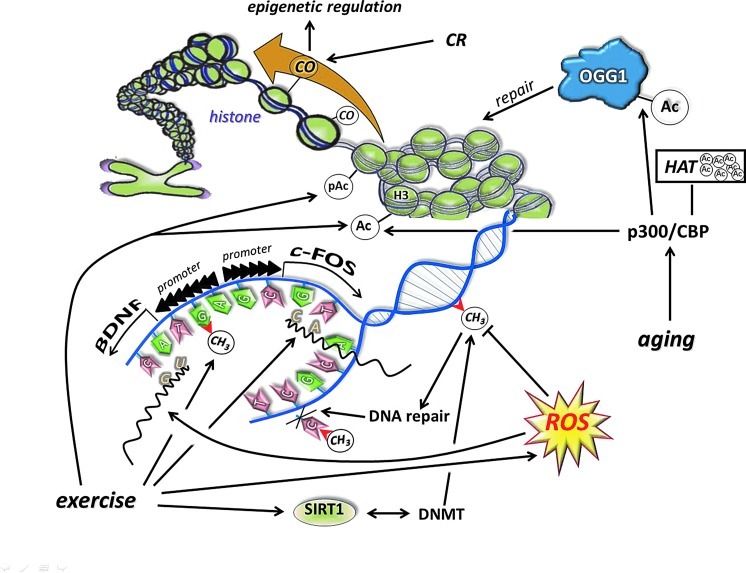FIG. 15.
Tight heterochromatin suppresses the rate of transcriptions, while euchromatin allows rapid response to challenges by gene transcription. The tightness of chromatin is dependent on post-translational modification of histone residues. The suggested mechanism by which exercise could play a role in DNA methylation and post-translational modifications of histone residues. Histone acetyl transferases and deacetylases, such as p300/CBP and SIRT1, are readily modified by exercise and aging, which might affect epigenetics. Exercise increases DNA methylation at the BDNF gene promoter region and also increases the acetylation of H3, and these modifications result in enhanced production of BDNF in the hippocampus (To see this illustration in color, the reader is referred to the web version of this article at www.liebertpub.com/ars.) CR, caloric restriction; HAT, histone acetyl transferases.

